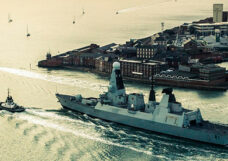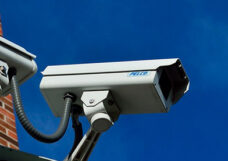
Industrial security cameras: types and characteristics
May 29, 2019
It has now been a long time since industrial security cameras stopped being a novelty that very few companies had, to become an indispensable device within the security systems used by business organizations. Day to day commercial operations require devices such as closed circuit television (known as CCTV) to identify all sorts of potential dangers, prevent them and warn about them when they emerge. Video surveillance cameras also have the valuable function of preserving the physical integrity and health of the personnel that is part of an organization or company.
However, when choosing the most appropriate industrial security cameras for our company, some questions may come to mind. What are their main differences, including technical specifications, that exists between different models? Which one would better fit the specific needs of my company? We will answer these questions below.
Types of industrial security cameras
Line scan cameras
These types of industrial surveillance cameras were first applied for the control of materials in continuous production, such as sheets of metal or paper; however, their use has spread to other industrial applications that need to work at a high speed and with a high resolution without an excessive price increase. A motion is performed through the use of a line sensor that can imply the camera moving toward the object, or vice-versa. Their line sensors can yield up to 16,000 elements (pixels), which allows them to obtain images with superb quality.
Area scan cameras
These types of cameras, also called matrix cameras, are called that way because their sensor covers an area composed of a pixel matrix and generates an image of that area. On one hand, the resolution of industrial cameras usually reaches 22 megapixels, though it is in connections – such as those that can be achieved thanks to Gigabit Ethernet – where these devices have experienced the most advances. Many of them use hi-def 16:9 formats.
3D Cameras
During the last few years we have seen a noticeable increase in the development of applications based on image processing and other artificial vision technologies with a special emphasis on the obtainment of three-dimensional information. The various technologies that have been applied, as well as new image capture and processing devices, have allowed 3D applications to go from being rare to becoming common techniques in industry.
Thermal cameras
Thermal cameras work by detecting different temperatures using infrared radiation instead of the visible spectrum. They are not only useful to detect intruders, but they are also used to find leaks of, for example, air or liquids. They can operate at wavelengths ranging from 0.9 to 2.5 μm, from 3 to 5 μm and from 7 to 12 μm.
360º field of view cameras
These types of cameras can surveil an entire complex or building, with de advantage that the general view can be divided into smaller ones without loss of image quality.
High-speed cameras
These types of video surveillance cameras increase the number of images captured per second thanks to partial scans, vertical binning or multitap sensor technology, among other techniques.
SWIR Cameras
These surveillance cameras stand out due to their high performance, which allows them to offer facial recognition, animal detection, or to obtain images even in rain or fog thanks to their short wave infrared spectrum.
Drones or UAVs
UAVs (unmanned aerial vehicles) or drones offer aerial views that can be highly valuable for certain types of industrial facilities. Depending on the size of the drone, they are equipped with cameras of different sizes, though even small lightweight cameras can provide high-resolution images.
Factors to keep in mind when choosing an industrial security system
When choosing an industrial security camera system, it is paramount to keep a series of things in mind, which will determine which device should be chosen. For example, you should not opt for the same type of camera if you want an indoor or an outdoor surveillance. You should also consider whether you want to use cameras whose motion can be controlled from a certain location or if there is a need for a specific type of lens.
Another step that should be taken before choosing an industrial security device with CCTV surveillance cameras should be wiring. It will go from each security camera to the remote control devices. This is related to the protection of the energy supply for the equipment, which is something that must be kept in mind in case of specific incidents. To obtain and manage the video signal from the surveillance cameras, there should be a device present, such as a video server or a digital recorder.
Video analytics for industrial security cameras
Video analytics is an indispensable tool to improve the security offered by surveillance cameras in industrial complexes. Not only does it improve the overall security, but also reduces the false alarm rate, and even allows for a decrease in the number of cameras that compose the security system itself. This is due to a higher efficiency, because crimes such as burglary can be prevented through an automatic analysis of the video images before they are committed.
These software applications can make descriptions in real time, and make it possible to keep a record of everything that the cameras detect while they are in operation. But, in addition, they can provide detailed reports that include the number of people, their physical appearance or the motions that they perform.
This analysis offers a significant added value to the company, since it provides valuable real-time information of everything that happens inside it. Furthermore, storage cost and security personnel savings can be achieved thanks to this, making it easier to analyze images captured by all devices.
Grekkom Technologies, proprietary analytics solutions
Grekkom Technologies has the widest offer of thermal and visible spectrum camera analytics on the market, with a false alarm ratio that ranges from 2% to 5%, which makes it the lowest on the market. Thanks to its analytics, which are compatible with all thermal and visible spectrum cameras on the market, VMS and CRA, the company offers proprietary solutions, with a highly skilled technical team.
Video surveillance cameras are useful in diverse environments and sectors, such as mining, airports, Oil & Gas, nuclear plants and the maritime sector, among others. If you want more information, get in touch with us.





